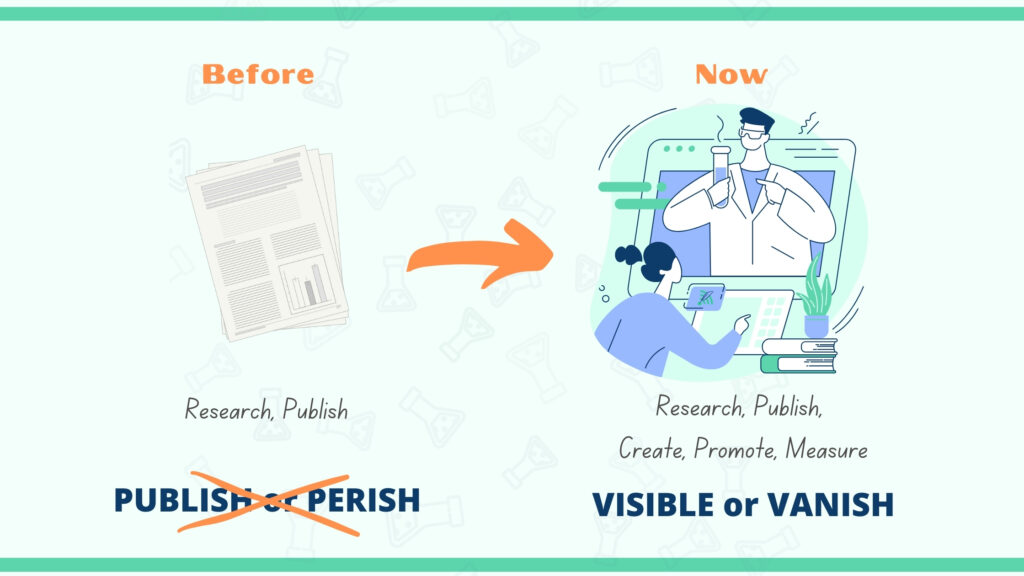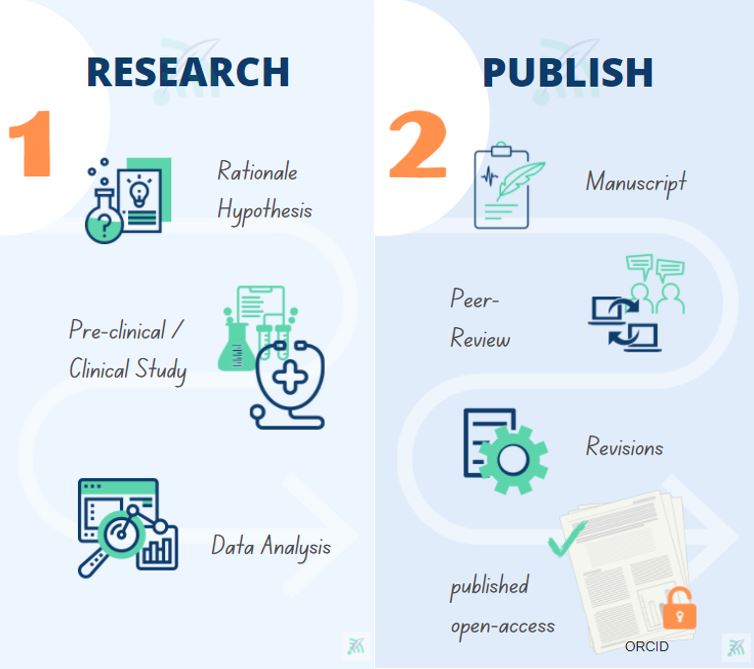Source: https://www.medtextpert.com/research-visibility-or-vanish/
Increasing Research Visibility & Interest by embracing appropriate online dissemination

Katja Martin
The academic world has changed and research visibility is much harder to achieve.
An estimated 2.5 million new papers are published every year. But this number has certainly and substantially increased now due to research interest on Covid-19. Only six months into the pandemic, the number of published coronavirus articles indexed on Web of Science and Scopus (between 1 January and 30 June 2020) was already reported to be over 23,600. Scientific information overload is a term that sums it up perfectly, not just for articles covering Covid-19.
But not only the amount of published scientific information has increased. The way we search and process it has changed fundamentally with the rise of online communication. The consequences are manifold. Scientists are now under a lot more pressure a) to find a journal to publish their research and b) to increase research visibility to get recognized and to demonstrate that their findings have an impact on society.
There is only one way to confront that challenge: to have a well-thought-out, strategic online dissemination strategy.
Sounds intimidating, right? It sure would freak me out as it adds to the whole publication journey big time.

So now, after all that work involved in planning and conducting your research followed by thorough data analysis and writing up the paper (again following increasingly detailed publication guidelines and peer-review), you have just arrived somewhere past the middle (or three quarters) of that journey. Now actually, you have to change cars (to use a racing analogy), or at least change tires, as the last section of the road involves challenging terrain.
After planning, it entails having to create, effectively communicate and promote suitable, engaging online communication assets that are not only picked up by your human but also the non-human audience.
As this may be way trickier (and resource-intensive) than it seems at first sight, we would like to share some tips with you today. Tips, that will not only help you plan, but also show you what to pack, how to set out on your journey, and what signs to watch out for to get you where you want to be.
Have a plan on how to increase your research visibility
As a frequent reader of medtextpert’s blogs, you may have noticed that we talk a lot about strategy first. Not that we don’t know that you know that, but because we don’t see it meticulously put into practice in scientific communications, especially not for the off-road promotional part that is mandatory to increase your research visibility and impact.
Choose your audience
Having a plan means that you should start out picturing your audience. Keep in mind that your human audience is not just your fellow scientists or colleagues (“experts“), but there are at least two more sub-categories to consider, all requiring different information on the same subject: the “managerial” and the “lay” audience. Read more here.
But there is more audience to be considered, namely the non-human audience. Although you might think now, they’ve gone crazy, and please stay with us to explain. The technology embedded in online underlies algorithms, and artificial intelligence makes many everyday decisions for us. Amongst them also suggestions for appropriate content provided as search result – answer to specific scientific information we were looking for. Those suggestions are based on our search intent, interests, past searches, and of course, on the available online content that is categorized (“in-store” and known) by those algorithms. Therefore, if you want your research findings to pop up as search results, you have to do something to recognize and categorize them.
How? Search Engine Optimization (SEO) techniques, including keywords to all your online content assays.
But let’s first give you an overview about how to turn your complex research results into attractive, straightforward, and easy-to-understand visual content elements that get seen by your audience(s). Knowing your options helps you plan creation and dissemination adapted to your target audience and specific channel and feeds your strategy.
No comments:
Post a Comment